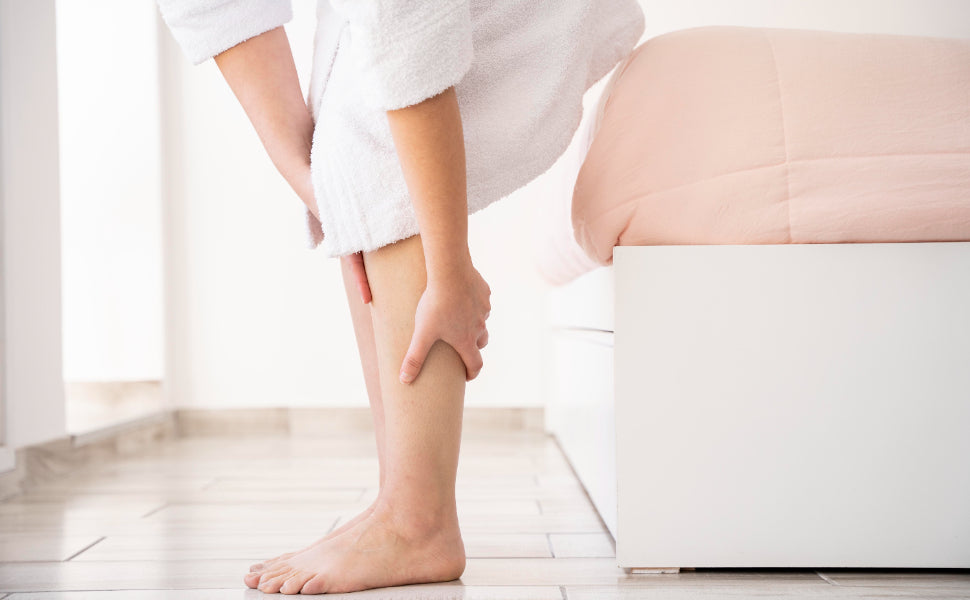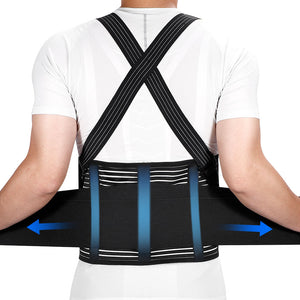Why Does the Top of My Foot Hurt?

A typical day often involves hustling around to complete our tasks. But when you suddenly experience pain at the top of your foot, even standing straight can become a challenge. This can leave you wondering, "Why does the top of my foot hurt?"
The pain might result from a sudden injury or overexertion. The human foot is composed of a complex array of muscles, bones, joints, and numerous nerves that work together to enable proper function. A disturbance in any one part can cause discomfort and even intolerable pain. Understanding the cause of this pain is vital to determining the right course of action.
This article will talk about the potential causes of bad foot pain and answer the question, "Why does the top of my foot hurt?" We will also discuss the best-suited treatments for the condition.

Common Causes of Foot Pain
Why does the top of my foot hurt? The following are the most common causes:
1. Sprains and Strains
Foot sprains and strains can result from accidents, falls, or traumatic sports activities and exercises. The key difference between the two lies in the affected tissues: a sprain involves injury to the ligaments, whereas a strain affects muscles or tendons. Both conditions cause significant distress, including severe pain, swelling, bruising, and muscle weakness.
2. Osteoarthritis
Osteoarthritis is a condition that affects the joints and is characterized by the breakdown of the smooth cartilage that covers them. This cartilage lubricates joint movements and acts as a shock absorber. When it wears down, the bones may come into direct contact, leading to pain, swelling, and stiffness. Osteoarthritis can result from injuries or the natural aging process.
3. Tendonitis
Tendonitis is an inflammatory condition affecting the tendons, often due to injury or repetitive strain. Tendons are strong connective tissue that attaches muscles to bones and facilitates body movement. Tendonitis often results from activities that place repeated stress on the foot, such as running or high-impact sports. This condition can cause sharp pain on top of foot when walking and impede daily activities.
4. Gout
Gout is a state of arthritis distinguished by sudden, severe pain attacks, often affecting the big toe and the top of the foot. It is caused by the collection of uric acid crystals in the joints, leading to fierce pain and swelling. Medications and lifestyle changes might prevent pain in the future.
5. Peripheral Neuropathy
Peripheral neuropathy involves nerve damage in the foot, leading to pain, tingling, and numbness. In this condition, nerves may send pain signals to the brain without any cause or fail to send signals when there is actual damage. This affects the sensory nerves, causing discomfort and increasing the risk of foot injuries due to the lack of sensation.
How to Diagnose the Cause of Foot Pain
Foot pain can arise from various causes; therefore, doctors use a combination of medical tests and patient medical history to pinpoint the exact issue. Here are some ways to help you answer the question, "Why does the top of my foot hurt?”
1. Medical History Inquiry
In the case of chronic foot pain, doctors consider the symptoms and recent physical activities and also take into account previous injuries to the feet or ankle. Understanding your daily activities and any recent changes helps doctors identify the underlying issue.
2. Physical Examination
A comprehensive physical examination of the foot involves checking for any swelling, tenderness, and range of motion. The doctor will identify specific areas of pain and swelling to determine which structures are affected, addressing your question, "Why does the top of my foot hurt?" They also apply light pressure to see where the pain is most intense. Sometimes, they even tell you to walk or do certain foot exercises to analyze the nature of your pain.
3. X-ray
The diagnosis can also include an X-ray when your doctor has doubts about bone abnormalities, fractures, or osteoarthritis. X-rays reveal changes in bone structure, joint space, and the presence of bone spurs or fractures, if any.
4. MRI
MRI provides detailed imaging to detect soft tissue injuries such as tendonitis or ligament damage. It provides a clear picture of the tendons, ligaments, and other soft tissues, helping to diagnose conditions not visible on X-rays.
5. Blood Tests
Sometimes, doctors also consider conducting blood tests to check for conditions like gout or infections that might be causing pain in ankle and top of foot. Blood tests can reveal elevated levels of uric acid or markers of inflammation and infection.
How to Treat Foot Pain
Our feet carry the weight of the entire body; therefore, even a mild injury or pain can cause severe distress and hinder your movements. Understanding why your foot hurts and getting timely and effective treatment can help you recover quickly. Treatment options can include:
1. Physical Therapy
Physical therapy is initially considered to help restore function and reduce pain. It includes targeted exercises and treatments such as ultrasound or electrical stimulation. Physical therapy is usually recommended to treat conditions including extensor tendonitis, peroneal nerve damage, and peripheral neurotherapy.
2. Medication
NSAIDs, pain relievers, or specific treatments are recommended for conditions like gout. Medications can help manage pain and inflammation, making daily activities more manageable.
3. Surgery
In cases of bad foot pain, surgical intervention may be required to repair damaged structures or correct deformities. Some foot pain treatments may include orthotics, casts or sprints for broken bones, foot surgery, steroid injections, etc., depending on your specific condition. Surgery is typically considered when conservative treatments fail to provide relief or when there is noteworthy structural damage.
How to Prevent Foot Pain
If you don't want to experience such foot pain again, there are methods to prevent it from happening. Some suggestions are listed below:
1. Wear Appropriate Footwear
Choose shoes that offer sufficient support and cushioning to prevent strain and injury. Diabetic and arthritis patients especially need to be careful while choosing their footwear. Wearing appropriate footwear for your physical activities helps you avoid sprains, strain, and pain from overuse.

Product shown: Fivali Ankle Compression Wrap For Sports With Flexible Straps – 2 Pack
2. Maintain a Healthy Weight
Try to lose the excess weight, as it will reduce the stress on your feet. Maintaining a healthy weight reduces the overall load on your feet, helping to prevent pain and injuries.
3. Exercise Properly
Improper or abrupt exercise movements can put undue stress on your foot. To avoid this, it is essential to warm up and cool down properly, using the correct techniques. Experts recommend stretching the calves and feet muscles after muscles warm up. Gradually advancing the intensity of your workout can also help prevent injury.
4. Maintain Good Posture
Good posture is optimal for good health. Proper standing and walking posture helps prevent unnecessary strain on your feet. Good posture ensures that weight is evenly distributed across your feet, decreasing the risk of pain and injury.
5. Treat Foot Problems Promptly
You should address all sorts of foot issues early before they become severe and painful. Listen to your body and consider the minor issues in their initial stages to avoid any chronic problems later.
Foot pain can occur due to an injury or physical activities like running or wearing the wrong shoes. Sometimes, it hints at more worrying health issues. Understanding 'why does the top of my foot hurt' can help you treat the pain on time and effectively. Avoid putting unbearable weight on your affected foot, and turn to a healthcare provider to see the best course of action.
For additional support, Fivali offers excellent ankle braces that may be recommended by your doctor or healthcare provider. For more information, visit our collection of ankle support braces.













